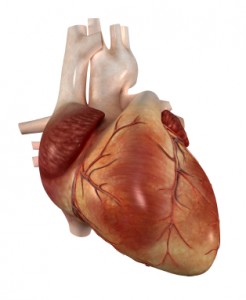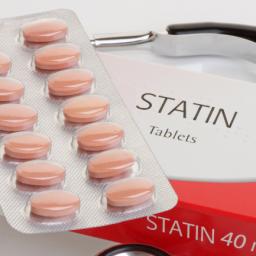Caffeine One of Several Compounds That May Protect Against Dementia
A 2017 article by Yousuf O. Ali and colleagues in the journal Scientific Reports finds that 24 different compounds may boost a brain enzyme that protects against dementia. The enzyme, NMNAT2, protects neurons from stress and combats misfolded proteins called tau that form plaques in the brain as people age.
Ali and colleagues screened 1280 compounds to identify those that might increase NMNAT2 production. Twenty-four of these looked promising, including caffeine and rolipram, an “orphaned drug” once studied as an antidepressant but discontinued in the 1990s. Others with weaker effects on NMNAT2 production included the atypical antipsychotic ziprasidone, cantharidin (a wart-removing substance secreted by blister beetles), fungal metabolite wortmannin, and retinoic acid, a vitamin A derivative. Thirteen of the compounds tested decreased NMNAT2 production.
The researchers followed up the caffeine finding by testing caffeine in mice genetically engineered to produce less NMNAT2. The caffeine administration normalized NMNAT2 production levels in these mice.
Senior researcher Hui-Chen Lu hopes this research will lead to the development of new drugs that can create a chemical blockade against the effects of neurodegenerative illnesses.
Antipsychotic Drug Pimavanserin Seems to Reduce Psychosis in People with Alzheimer’s
 The antipsychotic drug pimavanserin was approved by the US Food and Drug Administration last year as a treatment for hallucinations and delusions in Parkinson’s disease. Now it looks as though it may also help people with Alzheimer’s disease. Pimavanserin works differently than other antipsychotic medications—a selective serotonin inverse agonist, it acts at serotonin HT2A receptors to produce effects opposite to those that serotonin would produce at the same receptor.
The antipsychotic drug pimavanserin was approved by the US Food and Drug Administration last year as a treatment for hallucinations and delusions in Parkinson’s disease. Now it looks as though it may also help people with Alzheimer’s disease. Pimavanserin works differently than other antipsychotic medications—a selective serotonin inverse agonist, it acts at serotonin HT2A receptors to produce effects opposite to those that serotonin would produce at the same receptor.
In a trial of 181 patients with Alzheimer’s and psychotic symptoms, those who received 34 mg/day of pimavanserin had a significant improvement in psychotic symptoms in six weeks compared to those who received placebo.
Over 12 weeks of treatment, pimavanserin did not impair cognition, as atypical antipsychotics can do.
Pimavanserin was well tolerated. The most common side effects were falls, urinary tract infections, and agitation. Like other atypical antipsychotics, the drug carries a box warning from the FDA that there is an increased risk of death when the drug is used to treat older people with dementia-related psychosis.
The FDA has designated pimavanserin a breakthrough therapy and is giving it priority review. These designations can speed up the development and review of a drug and are granted when a drug looks like it will be substantially better or safer than existing treatments for a serious condition.
Transcranial Direct Current Stimulation Improved Picture-Naming in People with Dementia
In a study of 12 people with mild Alzheimer’s disease or frontotemporal dementia, transcranial direct current stimulation (tDCS) improved the participants’ abilities to name an object in a picture more than did a sham stimulation. TDCS is a treatment in which an anode and a cathode electrode placed on the skull are used to deliver a steady low level of electrical current to the brain. There is currently no treatment available to specifically target symptoms of dementia such as forgetting words.
The research by Howard Chertkow and colleagues was presented at the 2017 meeting of the American Academy of Neurology. In the study, participants received either 30 minutes of anodal tDCS targeting the parietal lobe of the brain or a sham stimulation.
They also received training in picture-naming. The participants were evaluated before stimulation, at the final stimulation session, two weeks after stimulation, and two months after stimulation. Compared to those who received the sham stimulation, those who received real tDCS improved at picture-naming, and maintained that improvement for two months.
Those who received tDCS also performed better at naming new pictures not included in the training, and were better able to remember a string of digits than those who got the sham stimulation.
Marker of Heart Failure May Predict Brain Deterioration
 A protein released into the blood in response to heart failure may be able to predict brain deterioration before clinical symptoms appear. The protein, N-terminal pro-B-type natriuretic peptide (NT-proBNP), is released when cardiac walls are under stress. High levels of NT-proBNP in the blood are a sign of heart disease. A 2016 Dutch study indicated that high levels of NT-proBNP in the blood are also linked to smaller brain volume, particularly small gray matter volume, and to poorer organization of the brain’s white matter. The study by researcher Hazel I. Zonneveld and colleagues, published in the journal Neuroradiology, assessed heart and brain health in 2,397 middle-aged and elderly people with no diagnosed heart or cognitive problems.
A protein released into the blood in response to heart failure may be able to predict brain deterioration before clinical symptoms appear. The protein, N-terminal pro-B-type natriuretic peptide (NT-proBNP), is released when cardiac walls are under stress. High levels of NT-proBNP in the blood are a sign of heart disease. A 2016 Dutch study indicated that high levels of NT-proBNP in the blood are also linked to smaller brain volume, particularly small gray matter volume, and to poorer organization of the brain’s white matter. The study by researcher Hazel I. Zonneveld and colleagues, published in the journal Neuroradiology, assessed heart and brain health in 2,397 middle-aged and elderly people with no diagnosed heart or cognitive problems.
Researchers are working to clarify the relationship between cardiac dysfunction and preliminary brain disease, but researcher Meike Vernooij says it is likely cardiac dysfunction comes first and leads to brain damage. Measuring biomarkers such as NT-proBNP may help identify brain diseases such as stroke and dementia earlier and allow for earlier treatment and lifestyle changes that can slow or reverse the course of disease.
Some Drugs for Hypertension Come with Greater Risk of Mood Disorders
 Depression and bipolar disorder have been linked to atherosclerosis, the accumulation of fats, cholesterol, and plaques on the walls of the arteries. There is some evidence that drugs to treat hypertension may contribute to mood disorders. A large study published in the journal Hypertension in 2016 suggests that certain classes of anti-hypertensive drugs, calcium antagonists and beta blockers, may increase risk of mood disorders compared to other treatments for hypertension.
Depression and bipolar disorder have been linked to atherosclerosis, the accumulation of fats, cholesterol, and plaques on the walls of the arteries. There is some evidence that drugs to treat hypertension may contribute to mood disorders. A large study published in the journal Hypertension in 2016 suggests that certain classes of anti-hypertensive drugs, calcium antagonists and beta blockers, may increase risk of mood disorders compared to other treatments for hypertension.
The study by researcher Angela H. Boal and colleagues used data from a hospital database to identify 144,066 patients between the ages of 40 and 80 who had taken anti-hypertensive drugs for more than 90 days. There was an independent linear connection between receiving a prescription for hypertenstion and being diagnosed with a mood disorder. Patients who took angiotensin-converting enzyme inhibitors or angiotensin receptor blocking drugs had the lowest rates of mood disorder admissions. Those taking calcium antagonists or beta blockers had an increased risk of a mood disorder, while those taking thiazide diuretics and those not taking anti-hypertensive drugs had no change in risk.
Statins Have Many Benefits
 Patients with mood disorders and elevated lipids, cholesterol, or triglycerides can get several benefits by taking statin drugs. Patients with depression are at increased risk for cardiovascular disease, heart attack, and stroke, and statins can lower these risks. Statins lower cholesterol and triglycerides.
Patients with mood disorders and elevated lipids, cholesterol, or triglycerides can get several benefits by taking statin drugs. Patients with depression are at increased risk for cardiovascular disease, heart attack, and stroke, and statins can lower these risks. Statins lower cholesterol and triglycerides.
Compared to women not taking statins, women taking this class of medications have a lower risk of depression. Men taking statins have a lower incidence of depression following a heart attack than men who are not taking statins.
Several studies over the past two decades have suggested that statins can also decrease the incidence of Alzheimer’s disease, though a 2017 article by Julie M. Zissimopoulos and colleagues in the journal JAMA Neurology suggested the effectiveness of statins in preventing Alzheimer’s may depend on the race and gender of the person taking them. People with depression are at increased risk for Alzheimer’s.
Editor’s Note: Given these many benefits, it may be a good idea for patients with depression or bipolar disorder and high lipid levels to talk to their physician about whether statins would be a helpful treatment for them.
Preventing Metformin Side Effects
Depression is a risk factor for type 2 diabetes, and the drug metformin is a common treatment for diabetes. In a 2016 article in the Journal of Clinical Psychiatry, researcher Chittaranjan Andrade suggests ways of minimizing side effects from metformin.
Gastrointestinal side effects such as nausea, vomiting, abdominal discomfort, flatulence, and diarrhea are common on metformin. In the article, Andrade writes, “These are less likely to occur with gradual dose uptitration, administration of the drug with meals, and use of a time-release formulation.”
Lactic acidosis, a buildup of lactate in the body that can result in muscle pain, burning, and other symptoms, is a rare side effect of metformin. Avoiding prescribing metformin to people with impaired kidney, liver, or cardiac functioning and other risk factors can prevent lactic acidosis.
Vitamin B12 absorption can also be affected by long-term metformin use. Andrade suggests that rather than waiting for a vitamin deficiency to be identified, a proactive approach should be taken. Long-term metformin users could be given an annual intramuscular shot of vitamin B12.
Bipolar Disorder and Diabetes Linked
 A systematic literature review in 2016 showed a definitive link between bipolar disorder and diabetes. Bipolar disorder almost doubles the risk of diabetes while diabetes more than triples the risk of bipolar disorder. The article by Ellen F. Charles and colleagues was published in the International Journal of Bipolar Disorders.
A systematic literature review in 2016 showed a definitive link between bipolar disorder and diabetes. Bipolar disorder almost doubles the risk of diabetes while diabetes more than triples the risk of bipolar disorder. The article by Ellen F. Charles and colleagues was published in the International Journal of Bipolar Disorders.
The review included seven large cohort studies. The studies, based on elderly populations only, examined bipolar disorder and diabetes rates. Charles and colleagues suggested that shared mechanisms could cause both illnesses. New disease models that explain the link between bipolar disorder and diabetes could lead to better treatments.
The review also reported that both bipolar disorder and diabetes were independently associated with risk of cognitive decline and dementia in these elderly individuals. People with diabetes had more brain atrophy on average than others who share their age and gender but did not have diabetes. People with bipolar disorder who also had diabetes and either insulin resistance or glucose intolerance had neurochemical changes in the prefrontal cortex that indicated poor neuronal health. In some cases, these patients also had reduced brain volume in the hippocampus and cortex.
In Case Control Study, Two-Thirds of Patients With Severe Depression Had Underlying Metabolic Abnormalities
 A recent study suggests that potentially treatable metabolic abnormalities in the central nervous system may underlie a large proportion of cases of severe, treatment-resistant depression. These abnormalities, such as folate deficiency in the cerebrospinal fluid, are not screened for regularly, as they require a spinal tap to diagnose.
A recent study suggests that potentially treatable metabolic abnormalities in the central nervous system may underlie a large proportion of cases of severe, treatment-resistant depression. These abnormalities, such as folate deficiency in the cerebrospinal fluid, are not screened for regularly, as they require a spinal tap to diagnose.
Researchers led by Lisa A. Pan were inspired to assess metabolic function in people with treatment-resistant depression after a young patient with severe, persistent depression who had attempted suicide several times improved dramatically after being diagnosed with a tetrahydrobiopterin deficiency in his cerebrospinal fluid and treated for the deficiency. Tetrahydrobiopterin is critical to the production of monoamine neurotransmitters.
The researchers carried out a case-control study of 33 teen and young adult patients who had had treatment-resistant depression since childhood and 16 healthy control participants. Twenty-one of the 33 patients with severe depression had metabolic abnormalities in their cerebrospinal fluid. Twelve had cerebral folate deficiencies (but no folate deficiency in blood tests). Those who took folinic acid for at least six weeks (1–2 mg/kg/day) in addition to their regular medications showed sometimes dramatic improvement in their depression.
Other metabolic issues identified in the patients with severe depression included abnormal levels of acylcarnitine in five patients, low tetrahydrobiopterin intermediates in one, low guanidinoacetate in another, and unusual creatine/creatinine ratios in three patients. None of the healthy participants had any metabolic abnormality.
While the study, published in the American Journal of Psychiatry in 2017, was small, it suggests that the underlying causes of some severe depression cases are going undiagnosed and untreated. The authors suggest that assessment of metabolic function should be more common in cases of severe treatment-resistant depression.
Depression Increases Heart Disease Risk to Same Extent That Obesity, High Cholesterol Do
 In men, depression seems to be equal to obesity and high cholesterol in increasing heart disease risk. A German study about heart disease risk included 3,428 men between the ages of 45 and 74 who were observed over a period of 10 years.
In men, depression seems to be equal to obesity and high cholesterol in increasing heart disease risk. A German study about heart disease risk included 3,428 men between the ages of 45 and 74 who were observed over a period of 10 years.
In an article in the journal Atherosclerosis, lead researcher Karl-Heinz Ladwig reported that while high blood pressure and smoking are the most powerful risk factors for fatal cardiovascular disease, depression is comparable to obesity and high cholesterol levels. Depression accounts for about 15% of cardiovascular deaths.
Ladwig suggests that depression screening should be standard in patients with other risk factors for heart disease.
Editor’s Note: Long-term preventive treatment for depression may have the added benefit of preventing heart attacks. In people with two prior depressions, most guidelines now recommend lifetime continuation of antidepressant treatment.




